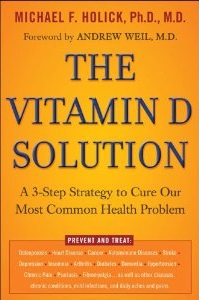The IOM “D-bate
Dr. Holick responds to a recent study by the Institute of Medicine about vitamin D intake.
There are several compelling reasons for why women should be concerned about their vitamin D status. Evidence suggests that during pregnancy a higher blood level of 25-hydroxyvitamin D reduces the risk for one of the most serious complications preeclampsia. It also reduces risk of requiring a cesarean section. Vitamin D is also very important for women’s bone health and to maximize the utilization of dietary calcium studies have been reported to suggest that the blood level of 25-hydroxyvitamin D should be greater than 30 ng/ml.
Vitamin D is critically important for the maintenance of bone health throughout life. Women who are vitamin D deficient can lose as much as 3% to 4% of their skeletal mass per year. Women who suffer from aches and pains in their bones and muscles are often misdiagnosed as having fibromyalgia or chronic fatigue syndrome when in fact suffering they are suffering from vitamin D deficiency osteomalacia. It is also recognized that women who had the highest intake of vitamin D reduced their risk of developing multiple sclerosis by 41% and rheumatoid arthritis by 44%. Vitamin D deficiency has also been associated with peripheral vascular disease which is associated with the painful muscle cramping associated with activity. The Nurses’ Health Study at Harvard University revealed that women who had the highest intake of vitamin D reduce their risk of developing breast cancer by almost 50%.
I recommend to all of my patients that they should take 2000-3000 IU of vitamin D a day from dietary sources, sensible sun exposure and supplements. I believe that it is important for women to take at least 2000 IU of vitamin D a day. Although many of the studies are association studies there continues to be strong evidence that increasing vitamin D intake has other health benefits besides those for bone health. From my perspective there is no downside to increasing your vitamin D intake to levels I have recommended in The Vitamin D Solution which is 1000 IU of vitamin D a day for children and 2000-3000 IU of vitamin D for adults.
Holick, M.F. Vitamin D Deficiency. New Engl. J. Med. 2007. 357:266-81.



